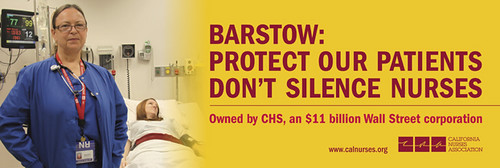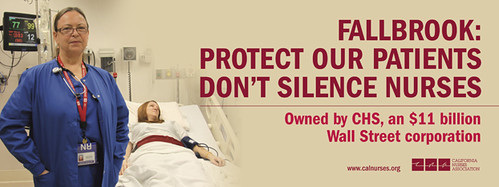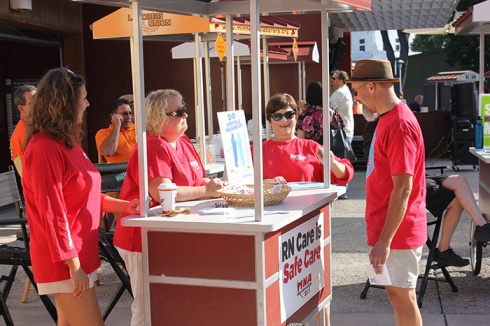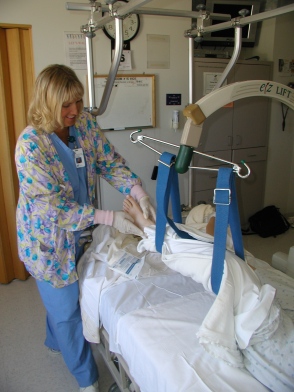There’s a new billboard that went up around town in several states, but unlike most billboards, it’s not trying to sell you something. It’s a message from your local nurses about the real corporation behind the face of the local hospital down the road.

Bluefield, WV billbord.
That corporation is one of the largest for-profit hospital chains in the country, Community Health Systems (CHS), which specializes in buying up hospitals such as ours in small and rural communities where patients have few other options for care. CHS boasts on its website that in “over 55 percent of the markets served, CHS-affiliated hospitals are the sole provider of healthcare services.” By cornering the market, they are cornering you and me into whatever version of care they’re willing to provide.
Nurses from communities who work in these CHS hospitals throughout California, Ohio, and West Virginia have put up these billboards as part of our campaign to educate the public about this $11 billion corporate chain.
After purchase of a local hospital, CHS cuts nurse staffing and other services to the bone. The result? We’re seeing more patient falls, a high rate of bed sores, and increased infection risk. Our patients are not getting the tests they need and the care they require. All of this contributes to high nurse turnover.

Greenbrier, Ronceverte, WV Valley billboard.
CHS tries to hide behind the friendly, small-town face of the local hospital. But that’s not CHS’ only secret.
Right now, CHS is under investigation by the U.S. Department of Justice for overbilling Medicare by hundreds of millions of dollars. We all have a responsibility to protect our seniors by ensuring that those privileged to do business as the primary provider of hospital services in our community do so with integrity and fairness.

Affinity billboard, Masillon, OH.
And, to top it off, CHS is looking to merge with another of the country’s biggest hospital chains, Health Management Associates, that is also being investigated for Medicare fraud.
Lack of competition means increased prices and decreased quality. It is an obvious disadvantage for consumers in any market, but it’s dangerous business in the healthcare market. Putting these two companies together into the country’s largest hospital corporation sounds like a really bad idea.

Barstow, CA billboard.
While the shareholders of these for-profit hospital chains might benefit from the combined earning power of a jumbo corporation controlling hundreds of hospitals in small communities, the people dependent on them as the only option in town may not.
Nurses know we are usually the only ones standing between our patients and hospital management’s practices and policies.

Fallbrook, CA billboard.
Last year, many of us voted to unionize with the National Nurses Organizing Committee because we want to improve the quality of care in our hospitals. Instead of working with us, CHS has bullied us, threatened us, fired us, retaliated against us, refused to negotiate with us, ignored court orders, and violated the law.
We decided it was time to tell the public the truth about this corporation. Don’t be fooled. There is no sense of “community” in this corporation’s business practices. And nurses refuse to be silenced.
So when you see that billboard think of us. And join us in promoting quality care in our hospitals. We work for CHS, but we belong to our community.
We are YOUR nurses, first, last, and always, dedicated to your care.
###
RELATED NEWS:
RNs to Picket Ohio, West Virginia, and California Community Health Systems Hospitals March 19 To Protest Care Problems, Labor Law Violations – Mar 14, 2013
Federal Court Issues Sweeping Order for RNs Against Barstow Hospital – Aug 2, 2013
Labor Board Judge Convicts Fallbrook for Violating Law, Barstow Also Indicted – 5/20/13






